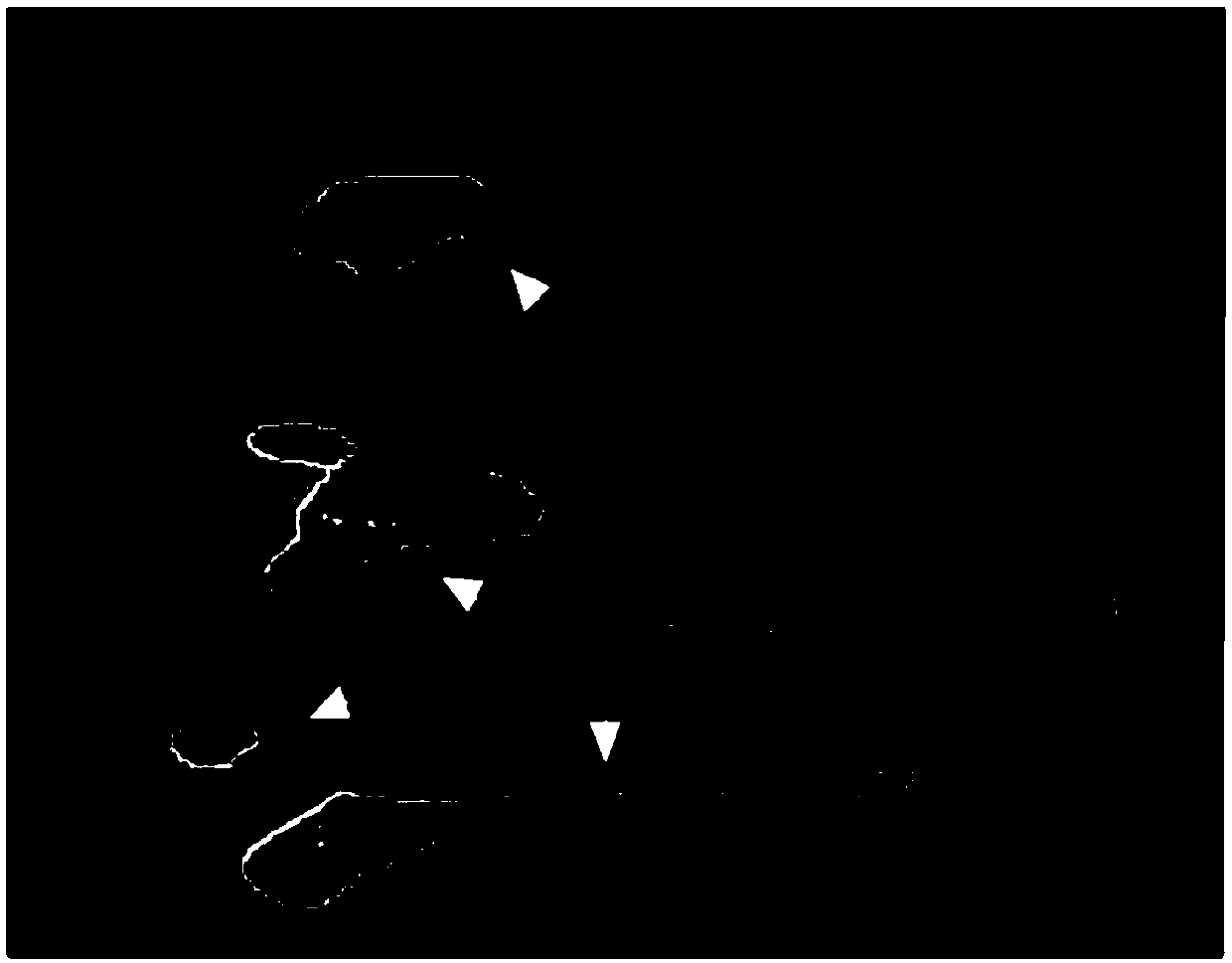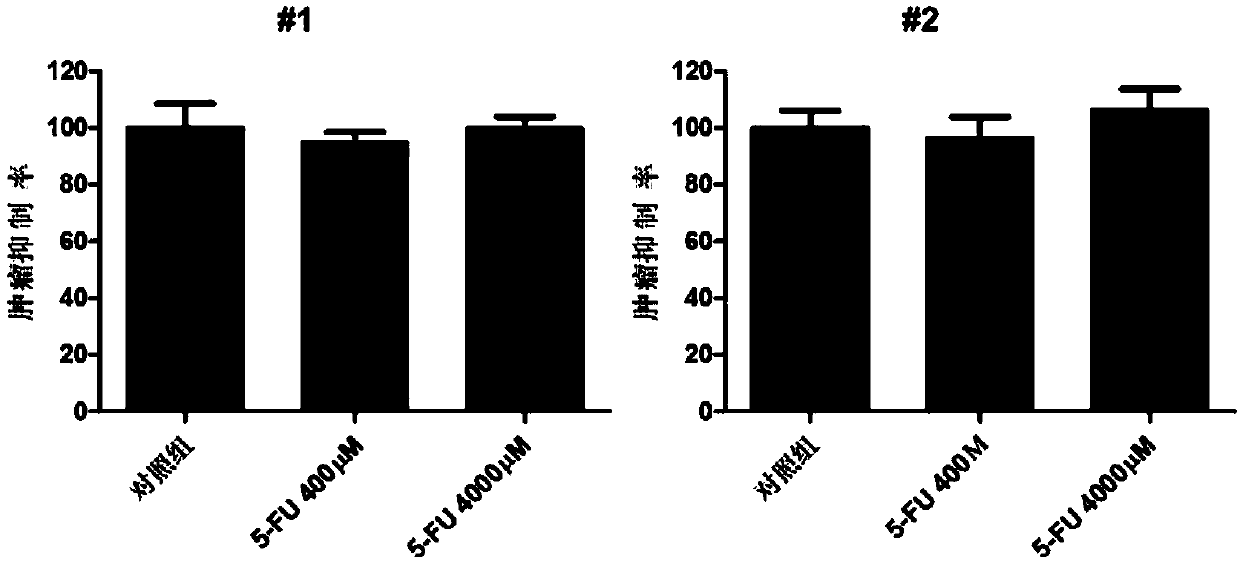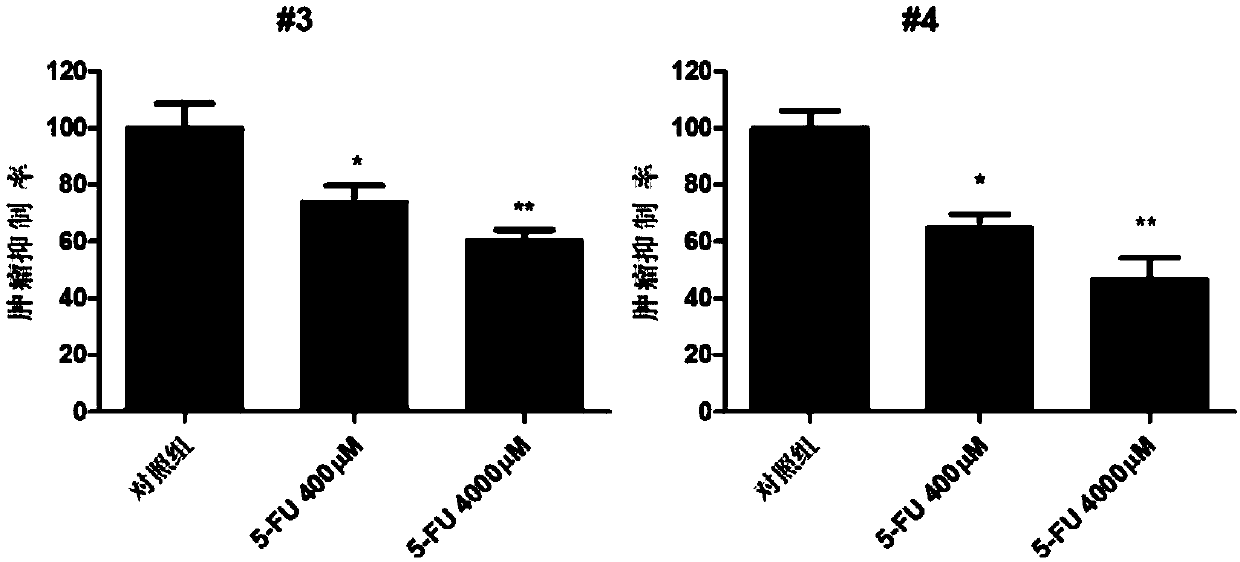Tumor cell heterogeneic transplantation zebrafish model, construction method and application thereof
A technology of xenotransplantation and tumor cells, which is applied in the field of zebrafish model of gastric cancer xenografting, can solve the problems that PDX models cannot meet
- Summary
- Abstract
- Description
- Claims
- Application Information
AI Technical Summary
Problems solved by technology
Method used
Image
Examples
Embodiment 1
[0049] Example 1: Construction of the patient-derived gastric cancer cell xenograft zebrafish model of the present invention
[0050] 1. Isolation of Primary Cells from Gastric Cancer Tissue
[0051] Surgical specimens of gastric cancer from patient-derived clinical tissue biopsies were placed in normal saline, blood clots, necrotic tissue, fat, and connective tissue on the tumor tissue surface were removed under aseptic conditions, and the tissue was cut into pieces with sterilized ophthalmic scissors. Wash twice with sterile phosphate buffer (pH 7.4), add a small amount of phosphate buffer, and repeatedly cut the tissue with elbow ophthalmic scissors until the tissue becomes a paste, about 1mm 3 size. Add 0.25% trypsin, digest at 37°C for 10 minutes, and centrifuge to remove the trypsin after observing that the tissue pieces are completely dissociated. The cells were resuspended in RPMI-1640 medium containing 10% FBS (fetal bovine serum).
[0052] 2. Staining of Primary C...
Embodiment 2
[0059] Example 2: 4 patient-derived xenograft zebrafish models are used to evaluate the clinical anticancer effect of 5-FU
[0060] 1. Determination of safe dose
[0061] Zebrafish embryos two days after fertilization were treated (soaked) with different concentrations of 5-FU for three consecutive days, and the highest concentration of 5-FU within the safe range of embryos was determined to be 4000 μM.
[0062] 2. Drug Treatment of Zebrafish Embryos
[0063] 4000 μM and 400 μM 5-FU were selected to act (soak) the zebrafish embryo models prepared by the method in Example 1 and injected with gastric cancer primary cells from different patients for three consecutive days, and 0.1% DMSO was used as a solvent control.
[0064] 3. Observation of anti-tumor effect by fluorescence microscope
[0065] Observe and compare the proliferation and spread of red patient-derived cells in the treated zebrafish embryos. The red cells were photographed under a fluorescence microscope, and th...
Embodiment 3
[0068] Example 3: Two xenograft zebrafish models of human gastric cancer cell lines (SGC-7901 and AGS) were used to evaluate the anticancer effect of 5-FU
[0069] 1. Drug Treatment of Zebrafish Embryos
[0070] Select 4000 μM and 400 μM 5-FU to act on (soak) zebrafish embryos (constructed according to the method in Example 1) that have been injected with gastric cancer cell lines (SGC-7901 and AGS) for three consecutive days, and use 0.1% DMSO as a solvent control.
[0071] 2. Observation of anti-tumor effect by fluorescence microscope
[0072] Observe and compare the proliferation and spread of red patient-derived cells in the treated zebrafish embryos. The red cells were photographed under a fluorescence microscope, and the red fluorescence intensity was quantified with Image Pro Plus software to calculate the anti-tumor effect of 5-FU. fluorescence intensity)*100% (see Figure 4 ).
[0073] The results of the xenograft zebrafish model of human gastric cancer cell line...
PUM
 Login to View More
Login to View More Abstract
Description
Claims
Application Information
 Login to View More
Login to View More - R&D
- Intellectual Property
- Life Sciences
- Materials
- Tech Scout
- Unparalleled Data Quality
- Higher Quality Content
- 60% Fewer Hallucinations
Browse by: Latest US Patents, China's latest patents, Technical Efficacy Thesaurus, Application Domain, Technology Topic, Popular Technical Reports.
© 2025 PatSnap. All rights reserved.Legal|Privacy policy|Modern Slavery Act Transparency Statement|Sitemap|About US| Contact US: help@patsnap.com



